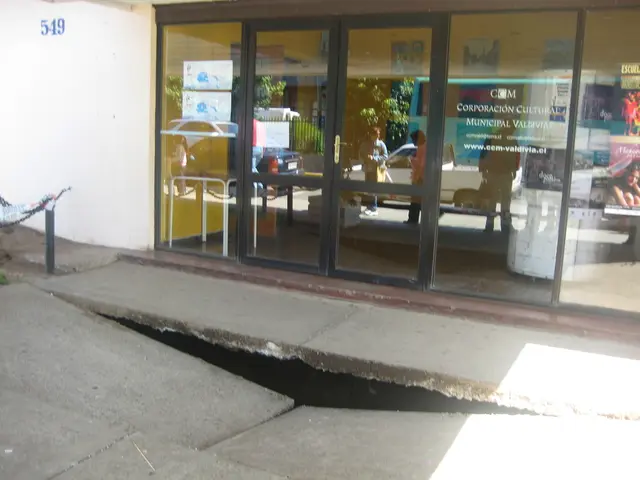Unleashing the Thrill and Terrors of Runway Incursions in Aviation
Uncontrolled Aircraft Encounters: Instances where Aircrafts Collide or Nearly Collide on Incorrect Trajectories
Alright, buckle up folks! You want the down-low on runway incursions? We've got you covered. So, imagine cruising down the runway like a boss in your aircraft when, all of a sudden, here comes an unauthorized individual or vehicle careening onto your beloved blacktop. That, my friends, is a runway incursion, and it's a bloody nightmare for aviation folk!
Now, let's break down what constitutes a runway incursion. It's simply the unapproved presence of an aircraft, human, or ground vehicle on a designated area where surface landing and take-off occur. For example, if some pesky "follow me" car decides to tag along on the runway while you're rocketing down it, that's a runway incursion. Or, if a plane that just landed ain't vamered the heck outta the runway quick enough and another one's heading for takeoff, you guessed it—runway incursion!
As you can imagine, these dang incursions don't usually lead to good times. They're typically a result of goofs committed by aviation professionals like pilots, controllers, and ground staff. Sometimes, though, technical issues might pave the way for these incursions.
Now, grab your popcorn, because we're about to dive into some real disaster stories!
Tenerife Disaster (1977)
Ever heard of the Tenerife disaster? It still holds the title for the deadliest accident in aviation history, taking 583 lives. What happened? This tragedy unfolded at Tenerife North Airport in Canary Islands when a KLM and Pan Am flight collided on the runway. The root cause? Pilot error, crummy communication, and dense fog—yep, your typical cocktail for disaster.
Aeroflot Flight 3352 (1984)
Onto Russia, where a tragic event occurred at Omsk airport. Aeroflot Flight 3352 ran right smack into a gaggle of maintenance vehicles on the runway, resulting in 178 deaths (4 poor ground workers and 174 brave souls aboard the plane).
US Airways Flight 1170 vs Aer Lingus Flight 132 (2005)
The turmoil didn't stop at airports on European soil. The Logan Int. Airport in Boston became the stage for a near-disaster. US Airways Flight 1170 and Aer Lingus Flight 132 received similarly duplicated clearances, super close together, and both took off from intersecting runways. The US Airways flight managed to scramble under the Aer Lingus aircraft to avoid a collision, barely escaping catastrophe.
The moral of these tales? Runway incursions can get darn ugly.
But fear not, aviation safety enthusiasts! There are ways to battle these hornet's nests of chaos.
First and foremost, all professionals in the aviation game—we're talking pilots, controllers, and ground staff—need to stay focused and alert at all times. They ought to follow strict rules like read-backs in R/T communication and checklist control to maintain a strict adherence to safety guidelines.
Now, here's a vital point—aviation professionals must fight the good fight against fatigue. Keeping both mental and physical health in tip-top shape is crucial for maintaining peak performance. And, yeah, we know fatigue sounds like something reserved for dragons and vampires, but fear not—it affects us humans, too!
Let's add some signage and graphics into the mix. Clear markings on runways and taxiways can be a godsend for pilots and ground crew.
Regular training can ensure that pilots, controllers, and crew have a thorough understanding of proper procedures. Advanced systems such as Airport Surface Detection Equipment (ASDE) can track ground movement for air traffic control.
Runway incursion mitigation (RIM) programs can identify and address runway incursion risks, while physical barriers like fences prevent unauthorized access to the runway.
Last but certainly not least, crew resource management (CRM) training promotes better communication and situational awareness among pilots, encouraging them to question other's decisions if need be.
So, while runway incursions might throw a wrench in the aviation game, knowledge is power, and we can minimize these ghastly mishaps through safety protocols and continuous education. Flight safe, folks!
Further Reading
- Federal Aviation Administration (FAA): Runway Safety Resources
- International Civil Aviation Organization (ICAO): Runway Safety Programs
- Airports Council International (ACI): Runway Safety Handbook
- International Federation of Airline Pilots' Associations (IFALPA): Runway Safety Manual
For more captivating reads, click here. Stay informed, stay safe, and happy aviating! ✈️🛫
- Runway incursions, a grave threat to aviation, are often the result of human errors committed by professionals in the aviation industry, such as pilots, controllers, and ground staff, and sometimes due to technical issues.
- In the history of aviation, there have been numerous disasters, like the Tenerife disaster in 1977, Aeroflot Flight 3352 in 1984, and US Airways Flight 1170 vs Aer Lingus Flight 132 in 2005, that have cost hundreds of lives and can be attributed to runway incursions.
- To minimize runway incursions, professionals in the aviation sector should strive to maintain vigilance, follow strict rules like read-backs in R/T communication, and checklist control, ensure they are well-rested to prevent fatigue, implement clear markings on runways and taxiways, engage in regular training, utilize advanced systems like Airport Surface Detection Equipment (ASDE), implement runway incursion mitigation (RIM) programs, physical barriers, and crew resource management (CRM) training to promote effective communication and awareness among pilots.








